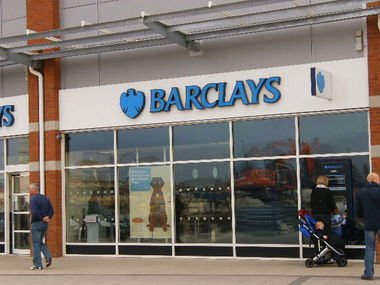
Martin Taylor, the former chief executive of Barclays, says the bank has engaged in “systematic dishonesty”.
It comes after Barclays was fined $450 million for trying to manipulate interest rates at which banks lend to each other.
Martin Taylor, who was chief executive of the bank from 1994 to 1998, said that Barclays’ deception looks like a deliberate strategy as it had been going on for years.
Other banks are also being probed.
The chief executive of Barclays, Bob Diamond, has come under pressure to resign.
Barclays has said its actions “fell well short of standards”.
In response, chief executive Bob Diamond and three other top executives at the bank are to give up their bonuses this year.
Investigators say that Barclays’ traders lied to make the bank look more secure during the financial crisis and, sometimes – working with traders at other banks – to make a profit.
Tracey McDermott, director of enforcement at the FSA, which imposed fines alongside the US financial regulator, said: “We have a number of investigations that are ongoing.
“Obviously we need to look at each case on its own particular facts but the initial indications are that Barclays was not the only firm that was involved in this.”
The US Department of Justice also said criminal investigations into “other financial institutions and individuals” was ongoing.

Other big names believed to be under investigation include Citigroup, JP Morgan, Deutsche Bank, HSBC and Royal Bank of Scotland.
Barclays’ misconduct relates to the daily setting of the London Interbank Offered Rate (LIBOR) and the Euro Interbank Offered Rate (EURIBOR).
These are two of the most important interest rates in the global financial markets and directly influence the value of trillions of dollars of financial deals between banks and other institutions.
They can also affect lending rates to the public, for instance with some mortgage deals.
It is not yet clear whether Barclays staff actually succeeded in manipulating the interest rates to the bank’s advantage and therefore whether it had any impact on borrowers.
While the FSA said only that the Barclays employees had attempted to do so, the US Department of Justice said that on some occasions they did affect the LIBOR and EURIBOR rates.
The fine imposed on Barclays is part of an international investigation into the setting of interbank rates between 2005 and 2009.
Each day the British Bankers’ Association (BBA) and the European Banking Association publish the LIBOR and EURIBOR rates by taking an average of the estimated rates submitted to them by leading banks.
Between 2005 and 2008, the Barclays staff who submitted estimates of their own interbank lending rates were frequently lobbied by its derivatives traders to put in figures which would benefit their trading positions, in order to produce a profit for the bank.
And between 2007 and 2009, during the height of the banking crisis, the staff put in artificially low figures, to avoid the suspicion that Barclays was under financial stress and thus having to borrow at noticeably higher rates than its competitors.
The FSA pointed out that Barclays traders were quite open about their routine attempts to lobby their colleagues who submitted the bank’s estimate of its borrowing costs to the BBA.
It was particularly concerned because it appeared to be “accepted culture” among some staff.
“Requests to Barclays’ submitters were made verbally and a large amount of email and instant message evidence consisting of derivatives traders’ requests also exists,” the FSA said.
In one instance, a trader recounted a conversation in which he had “begged” the submitter to put in a lower LIBOR figure.
“I’m like, dude, you’re killing us,” he said.
His manager replied: “Just tell him to… put it low.”
In turn, the staff submitting the data would respond to the traders’ requests.
“For you…anything,” said one.
“Done… for you big boy,” said another.
And: “I owe you big time… I’m opening a bottle of Bollinger.”